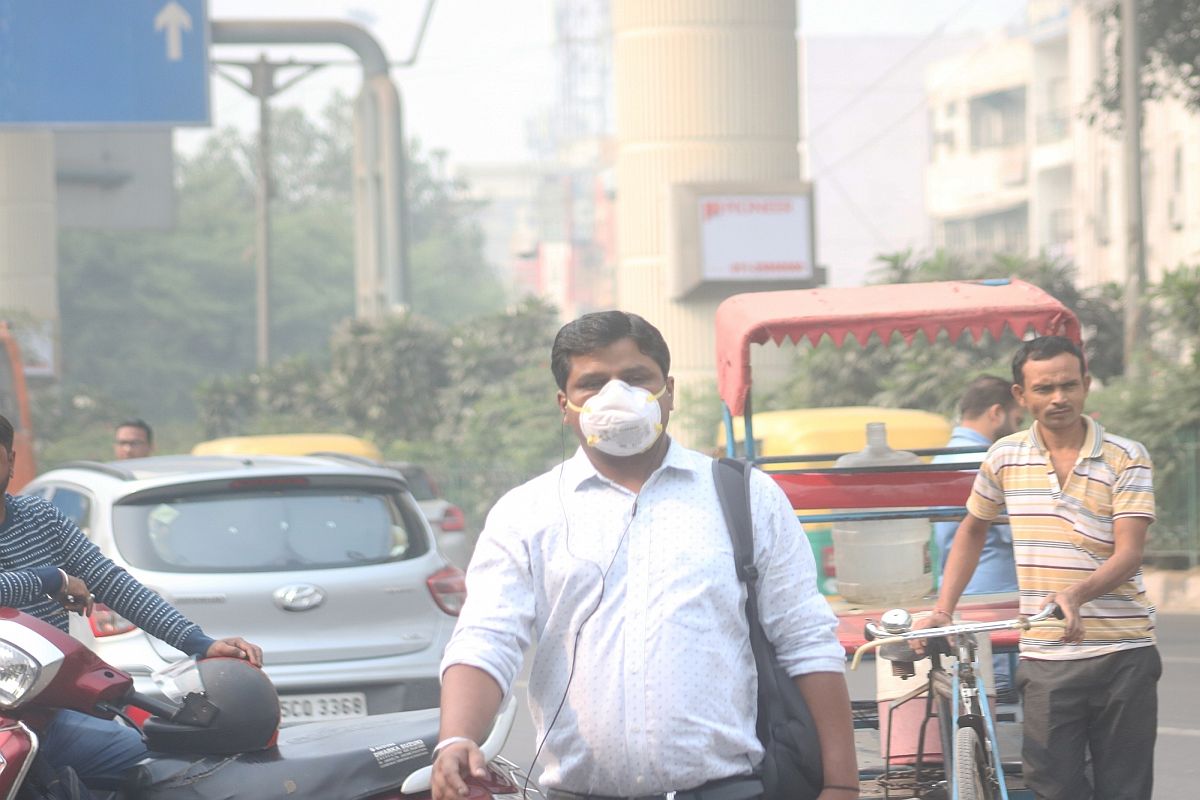Smoke genie of old Calcutta
Charcoal, dung, wood etc., used as fuels before the mid-19th century were responsible for the problem of smoke, or miasma.
SAFAR also advised people to stop any activity if they experience any unusual coughing, chest discomfort, wheezing, breathing difficulty, or fatigue and consult a doctor.

The air quality will improve towards "very poor" only by Thursday, said SAFAR. (File Photo: IANS)
After a few days of respite from the smog, thick toxic haze once again engulfed the national capital on Tuesday, with the air quality index (AQI) dipping to 453 in the “Severe” category, according to the System of Air Quality and Weather Forecasting And Research (SAFAR).
The AQI of Delhi was 416 at 10 am, according to the Central Pollution Control Board (CPCB). The AQI of the national capital region was also high with Ghaziabad at 445, Noida and Greater Noida at 436, Faridabad at 404 having a similar experience. Haryana’s Panipat’s AQI at462, Hisar’s at 406 and Jind with 439 too, were in the “severe” category.
The air quality will improve towards “very poor” only by Thursday, said SAFAR.
Advertisement
The forecast by SAFAR SAID, “The AQI is likely to deteriorate to ‘severe’ category for the next two days and improvement towards ‘very poor’ is predicted only by November 14.”
It said under the influence of a western disturbance, no rainfall is expected in the Delhi region but the sky will be partly cloudy with cool temperature during the next two days which may lead to lowering of boundary layer height and accumulation of pollutants near the surface.
The effective stubble fire counts estimated by SAFAR-integrated multi-satellite methodology were 1,846 on Sunday.
“Stubble plume intrusion is expected to increase and a decrease in surface wind speed over the Delhi region is forecasted for the next two days,” the forecast said.
SAFAR’s advisory says that people should avoid all outdoor physical activities.
“Give a miss to walk today. If the room has windows, close them. If the air conditioner provides a fresh air intake option, close it. Keep the room clean – don’t vacuum. Do wet mopping frequently,” it said.
It also advised people to stop any activity if they experience any unusual coughing, chest discomfort, wheezing, breathing difficulty, or fatigue and consult doctor.
“Masks known as N-95 or P-100 respirators may only help if you go out. Do not rely on dust masks for protection,” it added.
After Diwali the severe air pollution caused health emergency in Delhi and grabbed international headlines.
The toxic haze covering Delhi’s skies were predicted for three weeks stagnant conditions caused by the delayed withdrawal of the monsoon and deterioration due to accumulation of pollutants.
The Environment Pollution (Prevention and Control) Authority had on Friday declared a public health emergency after air quality in the NCR region dipped to 410 on October 31.
Following the declaration, the Delhi government ordered the closure of all schools till November 5, banned construction activity and bursting of crackers during the winter season.
The biomass burning in Punjab and Haryana hit a new peak with a contribution of 44 per cent in air pollution.
Delhi breathed easier last week, as pollution levels dropped further due to clearer skies and moderate wind speed.
An AQI between 0-50 is considered ‘good’, 51-100 ‘satisfactory’, 101-200 ‘moderate’, 201-300 ‘poor’, 301-400 very poor’ and 401-500 severe’. An AQI above 500 falls in the severe plus category.
Advertisement